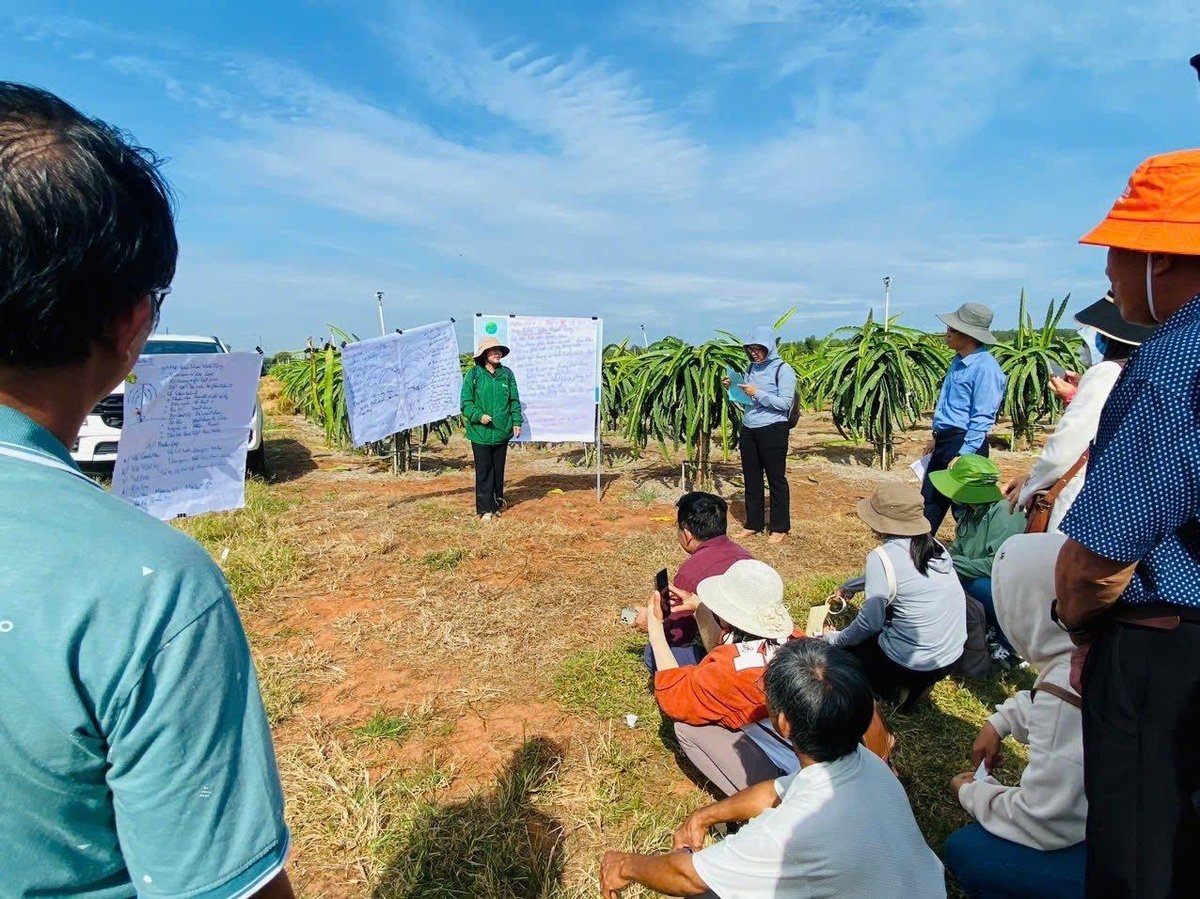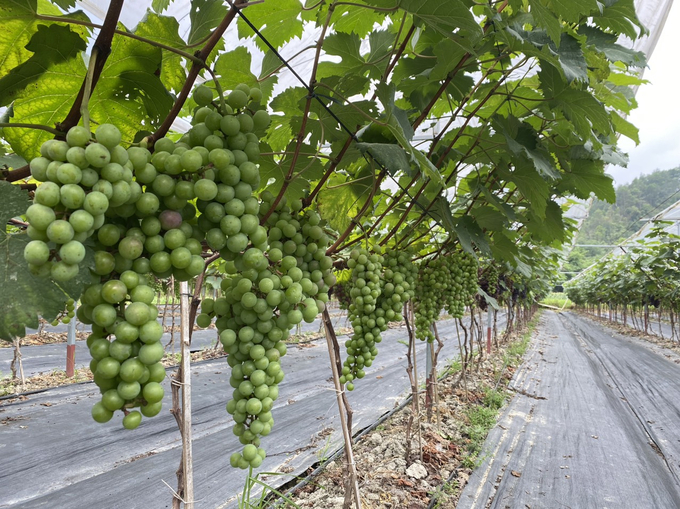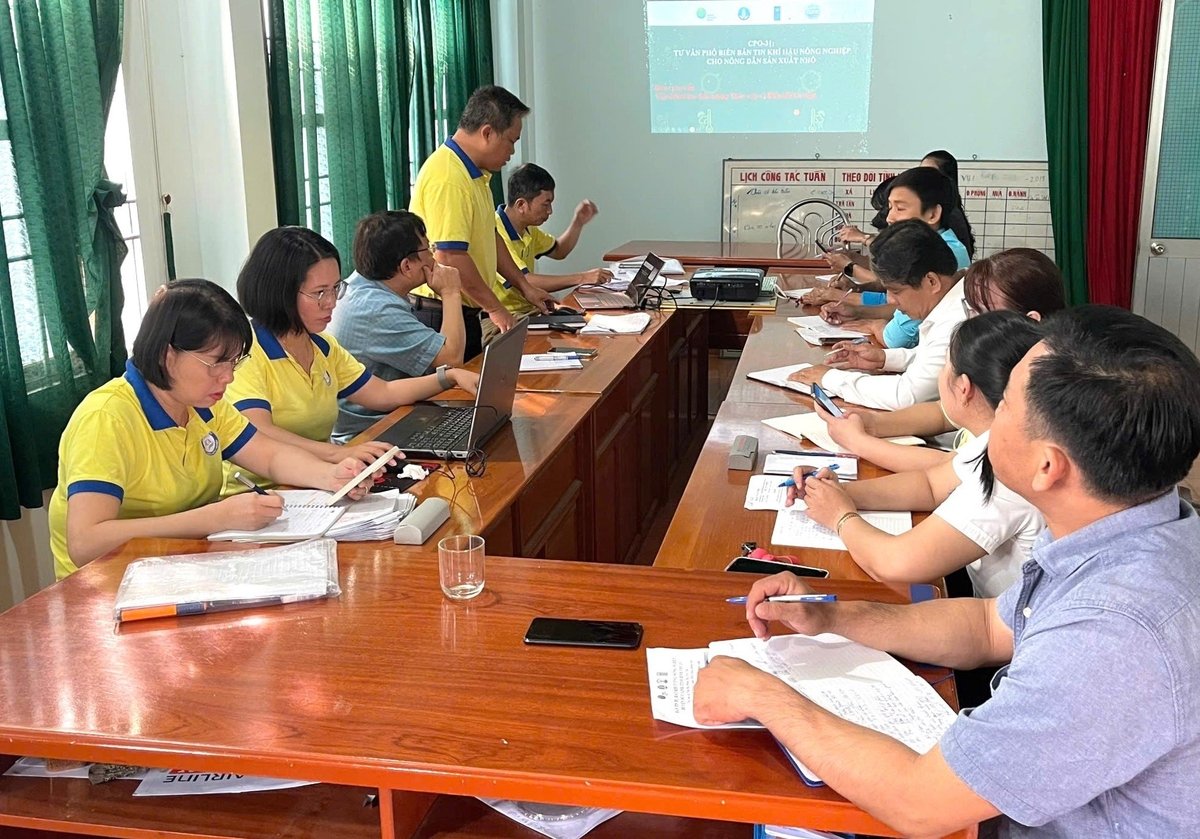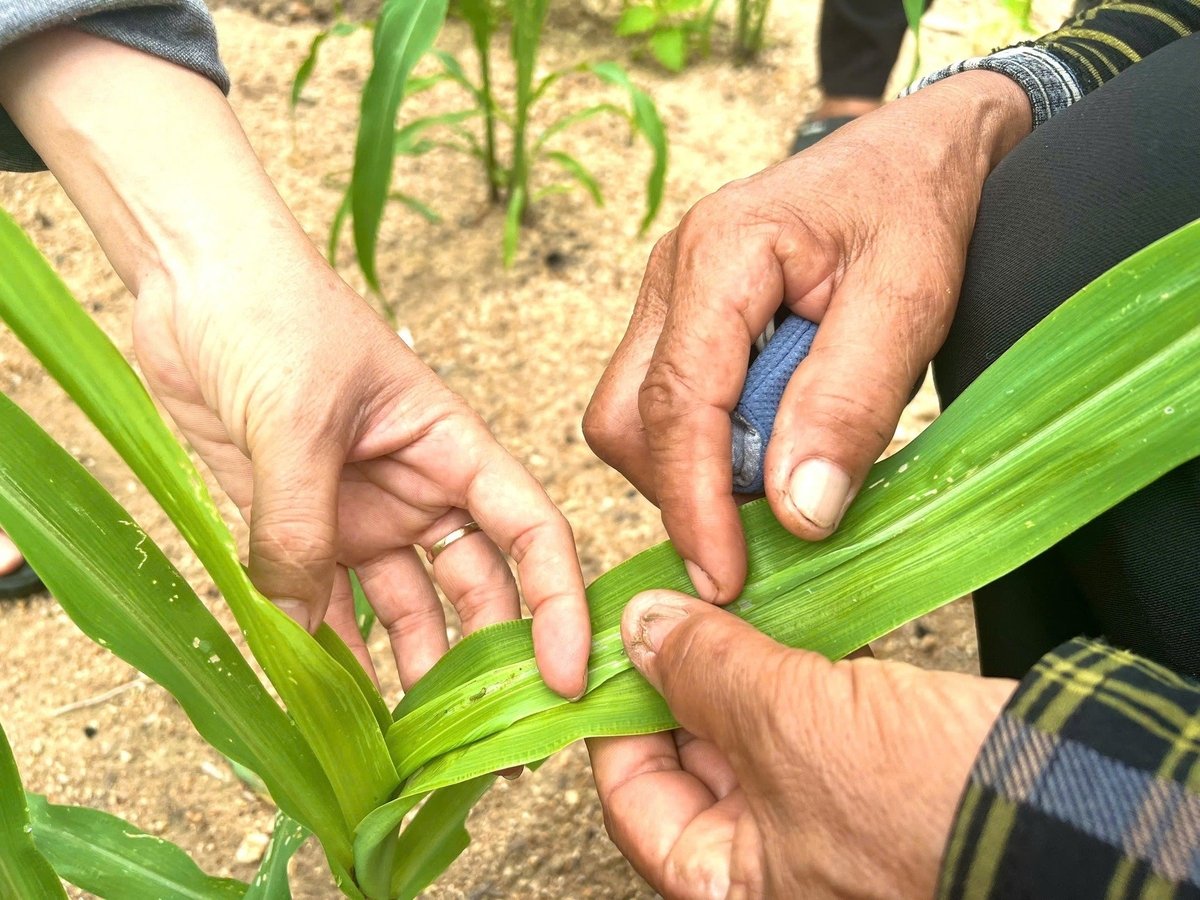November 9, 2025 | 06:41 GMT +7
November 9, 2025 | 06:41 GMT +7
Hotline: 0913.378.918
November 9, 2025 | 06:41 GMT +7
Hotline: 0913.378.918
In the 2025 Winter-Spring crop season, several localities in northern and central Vietnam were abuzz with concern over rice plants failing to produce grains or producing only shriveled ones. Farmers and local agricultural agencies blamed the unusual weather - prolonged cold and rainy spells during the critical flowering and pollination stages of rice growth.
Meanwhile, the Plant Production and Protection Department, along with agricultural experts, pointed to another equally important reason: Many rice fields had been sown earlier than the recommended seasonal schedule. As a result, flowering occurred just when the adverse weather hit.
Regardless of where the responsibility lies, in the face of increasingly erratic weather patterns, adhering to production recommendations from the agricultural sector is crucial.

A training session for agricultural extension officers on climate-resilient agriculture. Photo: TN.
Overall, people mainly access weather information through traditional channels such as bulletins from meteorological agencies (the National Centre for Hydro - Meteorological Forecasting, regional and provincial stations) and technical recommendations from the agricultural sector. However, it is important to recognize that specialized bulletins often contain highly technical language, making them difficult to understand and not fully focused on weather factors that directly impact agricultural production. For example, forecasts may mention rainfall but lack assessments of water requirements for different crops, drought risks for each crop type, seasonal pest and disease developments, or optimal planting times. As a result, many farmers tend to rely on their years of experience, which can leave them unprepared when facing unusual weather conditions.
According to Dr. Nguyen Huu Quyen, Deputy Director of the Research Center for Agro-Meteorology (RCA), meteorological forecasting is a probabilistic science and cannot provide absolute accuracy regarding the timing, location, and intensity of climatic phenomena. Therefore, the major challenge is not to achieve "100% accurate forecasts," but rather how to enable people to use forecast information flexibly in their production practices; and how to effectively integrate meteorological information into local decision-making processes.
Experience in developing agricultural weather bulletins in the Central Highlands and South Central Coast regions shows that information needs to shift from purely “weather-meteorological” data to more actionable “production advisories.”

An adaptation scenario for grapes - one of the main crops in Ninh Son District (Ninh Thuan) - is integrated into the district’s agricultural climate forecast bulletin for June 11–20, 2025. Photo: Hai Tien.
For example, a bulletin should not just say “temperatures will be above average,” but clearly state that “a heatwave will last for the next 10 days, so farmers need to delay planting schedules and increase drip irrigation early in the morning.” Such bulletins, if presented with images, icons, colors, or simple language, will be more accessible to farmers. This approach is even more effective when communicating with the elderly, ethnic minorities, poor households, and illiterate people.
Moreover, trust comes from practical results, not absolute forecast accuracy. After early warnings of drought or heavy rain, farmers adjust planting times, choose short-duration crop varieties, or apply water-saving irrigation techniques - helping reduce losses and increase yields. This is the result of effective forecasting.
To enhance the strategic role of meteorological and hydrological (M&H) information in economic development plans and climate change adaptation, Dr. Nguyen Huu Quyen emphasizes the need to change the approach: Climate information must be officially integrated into decision-making processes at the commune, district, and provincial levels. Specifically, seasonal climate bulletins can serve as important reference materials in developing cropping calendars, water allocation plans, seed distribution, and creating climate-resilient production scenarios at the local level. In pilot localities such as Tuy Phong (Binh Thuan) and Krong No (Dak Nong), climate information has been incorporated into seasonal briefing meetings at commune People’s Committees, becoming an indispensable part of production management.
An effective approach, fully aligned with the digital transformation orientation promoted by the Ministry of Agriculture and Environment and the Politburo’s Resolution 57-NQ/TW on breakthroughs in science, technology, innovation, and national digital transformation, is to develop a shared digital data platform that tightly connects the meteorological - hydrological sector with the agriculture - environment sector.

A consultation session integrating agricultural climate information was held in Duc Linh District, Binh Thuan Province, in 2024. Photo: TN.
These platforms not only help integrate weather–climate data with ecological and farming data (such as crops, livestock, seasons, soil types, etc.), but also enable the development of specialized agricultural climate services tailored to specific regions and types of production. As a result, farmers, cooperatives, and local authorities can actively access information, assess risks, and plan climate-adaptive agricultural activities directly on digital platforms.
In terms of training and capacity building, the most practical approach is to design training programs linked to specific local production contexts. Farmers and grassroots technicians should be guided on how to read, understand, and apply meteorological and hydrological information to crop calendars, irrigation schedules, variety selection, and pest management. The target audience for training should expand beyond farmers to include commune-level extension officers, cooperative staff, members of farmers' unions, and women’s associations. These are the key actors in fostering scientific farming practices and ensuring compliance with official guidance.
In addition, communication methods should be diversified, including illustrated leaflets, short videos, ethnic-language bulletins, and Zalo mini-apps, to more effectively reach people in remote and rural areas.
As weather patterns become increasingly erratic, farmers can no longer be expected to passively endure the devastating impacts of natural disasters that drain their production resources. Climate advisory services tailored to specific groups, such as farmers, cooperatives, and agricultural enterprises, have become an urgent necessity. According to Mr. Vu Thai Truong, Acting Head of the Climate Change and Environment Division at UNDP Vietnam, the country needs to institutionalize agricultural climate advisory services as an official component of national target programs and climate change action plans.

Climate advisory activities target specific groups such as farmers, cooperatives, and agricultural enterprises, aiming to support proactive production management and reduce the impacts of extreme weather. Photo: TN.
In particular, the development, adoption, and implementation of a National Framework for Climate Services (NFCS), as recommended by the World Meteorological Organization, is a strategic and long-term policy solution. For the agricultural sector, the NFCS provides a foundation for the sustainable development of climate services, from climate forecasting and disaster risk warnings to decision support for irrigation, seed selection, and pest and disease management.
The NFCS also helps standardize data-sharing procedures and improve coordination between meteorological agencies and agricultural technical departments. This reduces overlap, increases efficiency, and enhances the reliability of agricultural climate information.
In addition, Vietnam needs to strengthen international cooperation to access advanced technologies and models, and to mobilize technical and financial resources. Establishing a sustainable financing mechanism for climate services can be achieved through integration into local government budgets, public–private partnerships, and the deployment of climate risk insurance instruments in agriculture.
“Finally, it is essential to launch strong and creative communication campaigns to raise awareness and encourage the use of climate information in agricultural production,” Mr. Truong emphasized. “A concrete target could be set at around 1 million information accesses per year through various communication channels.”
Translated by Phuong Linh

(VAN) MAE's joint working group will implement the EUDR Adaptation Action Plan, starting with the comprehensive national database development and management.

(VAN) Developing a clean energy ecosystem is a key solution for controlling pollution and achieving the Net Zero emissions target.

(VAN) At the forum 'Green Energy - Clean City,' experts and businesses emphasized that Viet Nam needs a coordinated roadmap aligning emission control with the standardization of clean fuels.

(VAN) Hanoi is developing a roadmap for emission control, green transport, and clean fuel use, aiming to become a low-emission and sustainable city.

(VAN) Authorities in Slovenia have uncovered the presence of paracetamol in non-processed pickles in acid from India.

(VAN) The Ministry of Agriculture and Environment of Vietnam has signed a new Memorandum of Understanding (MOU) with WWF, focusing on nature conservation, green development, and sustainable emissions reduction.

(VAN) Viet Nam's strong commitment to green energy, supported by businesses, scientists, and the public, is a shared national mission.